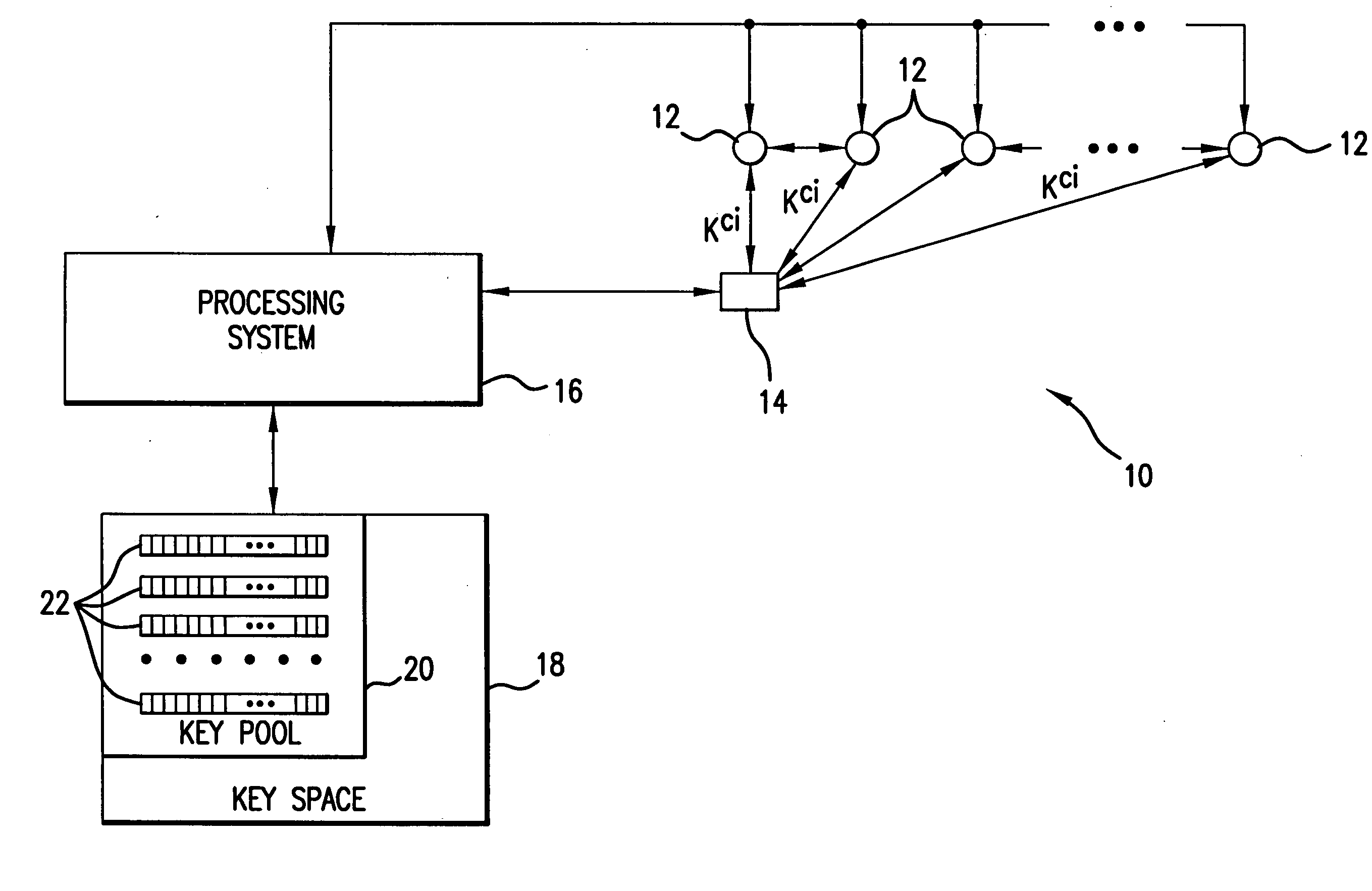Method and apparatus for key management in distributed sensor networks
- Summary
- Abstract
- Description
- Claims
- Application Information
AI Technical Summary
Benefits of technology
Problems solved by technology
Method used
Image
Examples
Embodiment Construction
[0040] Referring to FIG. 1, a Distributed Sensor Network system 10 includes a plurality of sensor nodes 12 adapted for being deployed on a terrain under scrutiny for the purpose of real time traffic monitoring, security monitoring, military sensing and tracking, distributed measurement of phase connectivity, real-time pollution monitoring, wide light monitoring, wire tracking, etc. The DSN may include several thousands sensor nodes. Each sensor node has a low cost, limited in computation and information storage capacity, highly power constrained, and can communicate over a short range wireless network interface with other sensor nodes 12 or with controller nodes 14. The controller nodes 14 are equipped with sensor readers as well as adapted for bi-directional communication both with sensor nodes and the processing system which controls the functions and operations of the Distributed Sensor Network system 10. The controller nodes 14 are additionally equipped for performing broadcasti...
PUM
 Login to View More
Login to View More Abstract
Description
Claims
Application Information
 Login to View More
Login to View More - R&D
- Intellectual Property
- Life Sciences
- Materials
- Tech Scout
- Unparalleled Data Quality
- Higher Quality Content
- 60% Fewer Hallucinations
Browse by: Latest US Patents, China's latest patents, Technical Efficacy Thesaurus, Application Domain, Technology Topic, Popular Technical Reports.
© 2025 PatSnap. All rights reserved.Legal|Privacy policy|Modern Slavery Act Transparency Statement|Sitemap|About US| Contact US: help@patsnap.com



